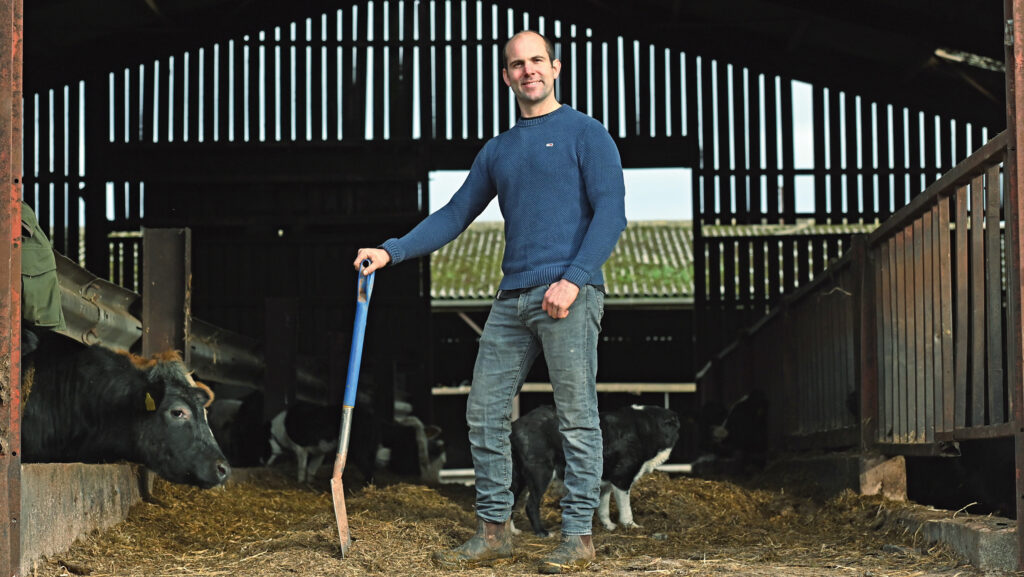Farmer Focus: Continued use of poultry muck hard to justify
 Dan Phillips © Richard Swingler
Dan Phillips © Richard Swingler As I write, on 27 July, the combine has just started rolling.
The oilseed rape is still quite green in the stem, so unusually it is the winter wheat to start.
Yields look a decent average, with the first field of Graham doing around 9t/ha.
This must be the earliest we have ever cut wheat, with the prolonged dry spell having prematurely ripened the crops.
See also: Advice on assessing the nutritional value of manure on crops
Typically, after such a long, dry spell, the first day out with the combine was interrupted by rain – twice.
Nutrient planning has also been on the agenda, with plans for autumn and spring muckspreading decided.
The majority of the cattle muck will be autumn-spread onto fields going into wheat, and about half of the poultry litter will be going onto turnips and oilseed rape, along with some that has been spread to grassland after second-cut silage. We then export any excess.
We produce a large quantity of manure and try to use as much as possible.
It is of great value to the arable side of the business, maintaining good levels of P and K and adding a multitude of other micronutrients, as well as improving organic matter content.
Having taken on some quite poor land about six years ago, with indices of 1, the improvement and reaction to a regular application of muck is clear to see.
Yields have improved dramatically on that land. Indices are now 2.5-3, along with a significant improvement in organic matter.
However, continued use of poultry litter is looking less likely. We farm in the Wye Valley catchment, where the river’s phosphate problem is well reported.
Consequently, our chicken integrator has stipulated that all manure produced in the Wye Valley must be exported out of the catchment – except where it can be used appropriately on arable land farmed by the producer.
With rising indices and regular audits, justifying its use is becoming increasingly difficult.
It seems counterintuitive to sell this valuable, nutrient-rich product, to replace it with bought nitrogen.
You’d hope the exported litter would find its way to phosphate-depleted land to improve soil fertility, but no, it’s all going to a proposed mega-anaerobic digester plant at Avonmouth.
It’s yet another example of the direct conflict between crop production and environmental policy.

